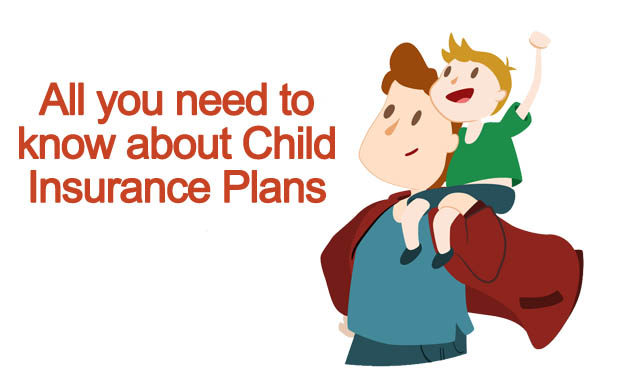As parents, we want to not only provide the best for our children in the present, but also to ensure their continued well-being for the future. As the cost of education rises, parents of even new-born children need to plan for expenses that are 15 – 20 years in the future. Not only that, a parent must be aware that in an uncertain life, the child must be provided the means to carry on his or her life even if something untoward was to happen to his parents.

The Child Insurance plans that are offered by almost all major insurers attempt to provide a solution to this worry.
So what are they exactly? In a way, it is similar to a ULIP (Unit Linked Insurance Plan), where a part of the premium is allocated to death-risk and the insurance company invests the rest in a similar manner to a Mutual Fund. Despite the name, it is important to understand that it is not the life of the child that is being insured. As with other plans, the life that is insured is of the parents. The difference is that in case of death of the insured, not only will the lump-sum insured be paid out, but the policy will continue with future premia waived off. On maturity of the plan, the value of the fund invested will be paid to the nominee.
Now that we have an understanding of what a Child Insurance Plan is, let us look at the salient advantages of this kind of cover:
1. Your child is protected from financial hardship in case of your untimely demise as he will receive the amount insured as a lump-sum immediately.
2. The policy will remain in force with premium waived off, so the investment will continue to grow and on maturity will lead to another lumps-um payout to the child.
3. Even if the insured survives the policy term, the amount is payable to the nominee on maturity, and can be used for such expenses as may arise at the time. This is why typically it is taken with a 15 or 20-year term when the child is still an infant, so that it can be used on maturity to pay for higher education or weddings.
4. Most plans also allow for withdrawal of a part of the funds after completing 5 years, so you can use the same for any other expenses that may crop up as well.
5. As it is a long-term and compulsory investment, it allows even less-savvy investors to reap the benefits of a long-term market cycle.
6. Child insurance can also be taken as a rider to an ordinary ULIP, in which case future premia are waived off in case of death of insured and policy continues. The additional cost is about 12% above existing premium.
However, there are certain caveats, or disadvantages that also need to be kept in mind before buying a child insurance plan.
1. Premium is substantially higher for a Child Insurance plan than it is for a ordinary term plan or even an endowment plan.
2. Compared to most ordinary ULIPs as well, Child Insurance plans tend to allocate a higher amount towards death-risk. This is to cover the fact that premia are waived in case of death.
3. As always, check the fine print before investing since not all Child Insurance plans offer all the benefits mentioned in this article.
On the balance of it, a Child Insurance plan sounds like a good idea if you are not otherwise financially savvy. For those who regularly invest in mutual funds, it might be a better idea to take an ordinary term plan, whose premium is much lower, and invest the amount saved on the child’s behalf in a safe mutual fund. However, if keeping the discipline of monthly investments is difficult for you, it would be better to opt for a good Child Insurance Plan. After all, it is your child’s future, so make sure it is secure!






























